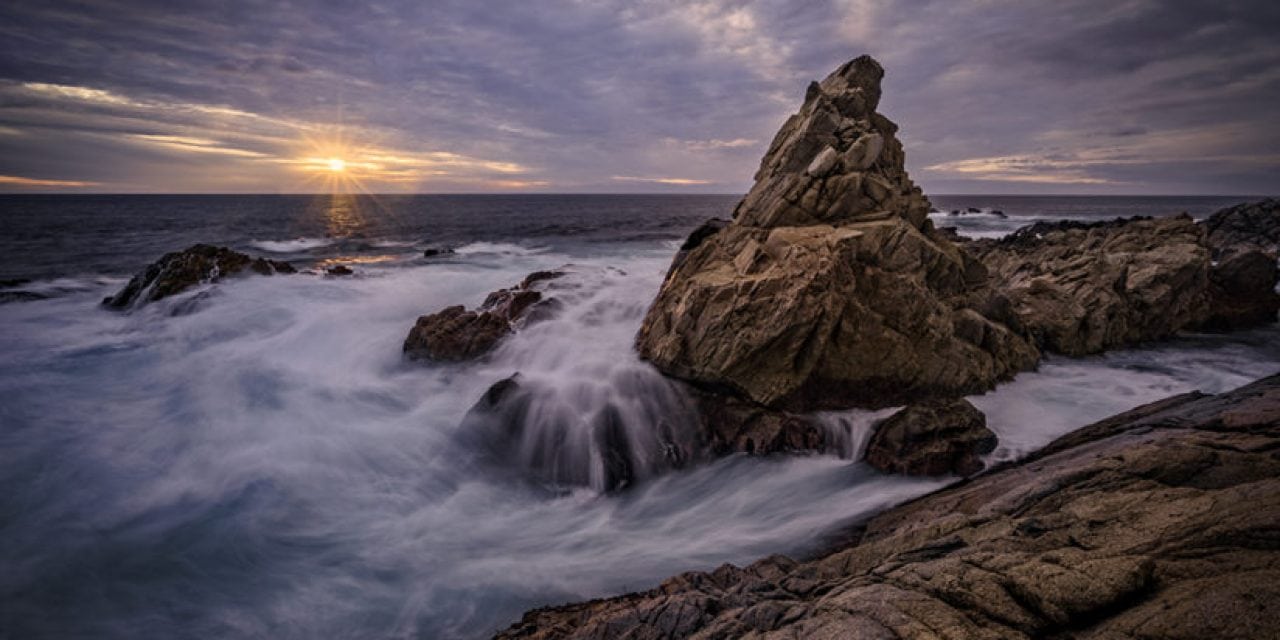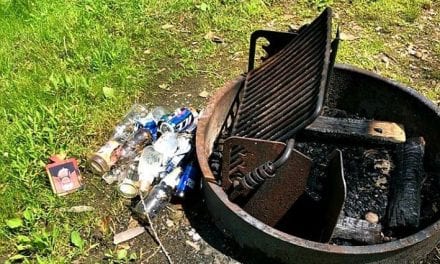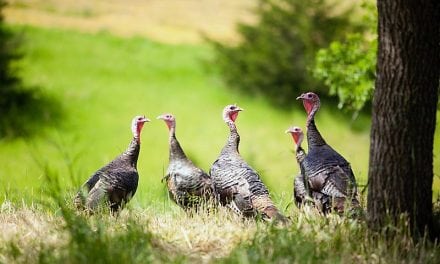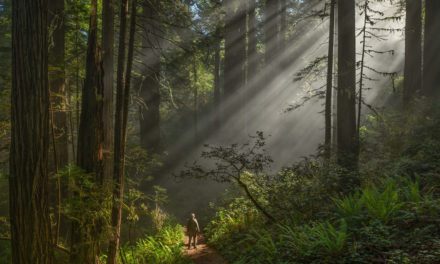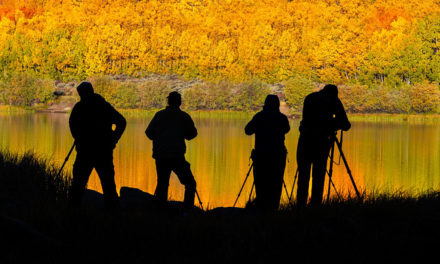The Big Sur coastline is a magnificent 98-mile stretch of central California land and sea, from Carmel in the north to Cambria at the southern end. A massive mudslide in May 2017 closed parts of the famed Highway 1 route, requiring visitors to journey from either one end or the other, but repairs are expected to be completed by mid-September 2018, fully reconnecting north and south. I prefer to concentrate my photography and workshops on the first 27 miles beginning at the Carmel River. This is by far the most visually appealing stretch and offers an incredible amount of locations, both iconic and hard-to-find.
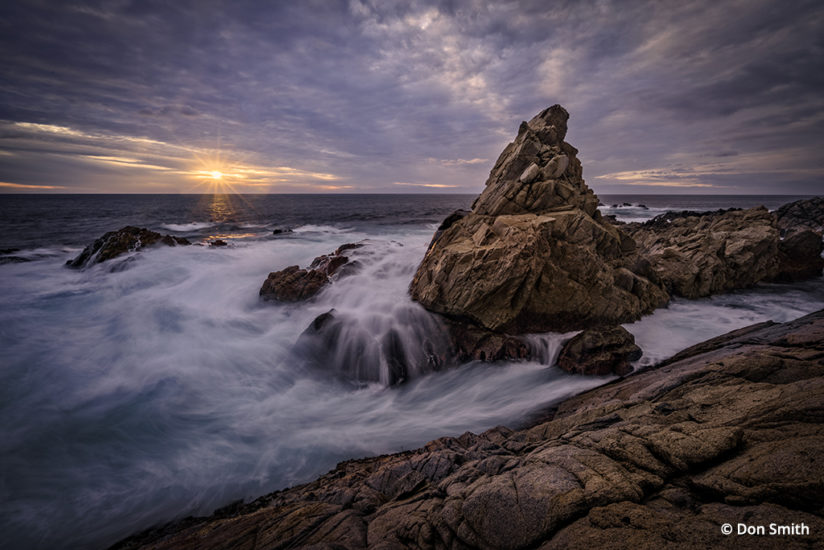
Big Sur is an amalgamation of the Spanish “El Sur Grande” and its English translation, “Big South.” The name Big Sur refers to the spectacular cliffs, beaches and forests found along this magical route. Landscape artist Francis McComas perhaps summed it up best when he described Big Sur as, “The greatest meeting of land and water in the world.”
Most of the locations I’ll mention are easily accessible to all. Unfortunately, much of the land that borders Highway 1 is privately owned and trespassing laws are strictly enforced. I encourage all photographers and visitors alike to observe this restriction. Many areas that were once accessible years ago have simply been fenced off to protect the natural beauty for years to come.
One word of caution when you begin your own exploration: Respect the sea! I implore all my workshop participants never to turn their backs to the ocean. The coastline is dramatic and beautiful but also can be extremely dangerous, and lives are needlessly lost each year to unexpected rogue and sneaker waves. Moreover, much of the coastline is hardened sandstone where the ocean’s current has cut away underneath an area that may look stable to the eye. Always be aware of where you are standing and photographing.
Point Lobos State Natural Reserve
It doesn’t take long once crossing over the Carmel River on Highway 1 to begin to realize the beauty that you are about to encounter. In fact, Carmel River State Beach is literally steps from your car. Another nearby favorite location that is right next to Highway 1 is Monastery Beach (the locals’ moniker for the actual monastery that sits on the south side of the highway). For my image of Monastery Beach below, I decided to add a neutral density filter to allow for a long exposure that captured movement in both the sky and water.
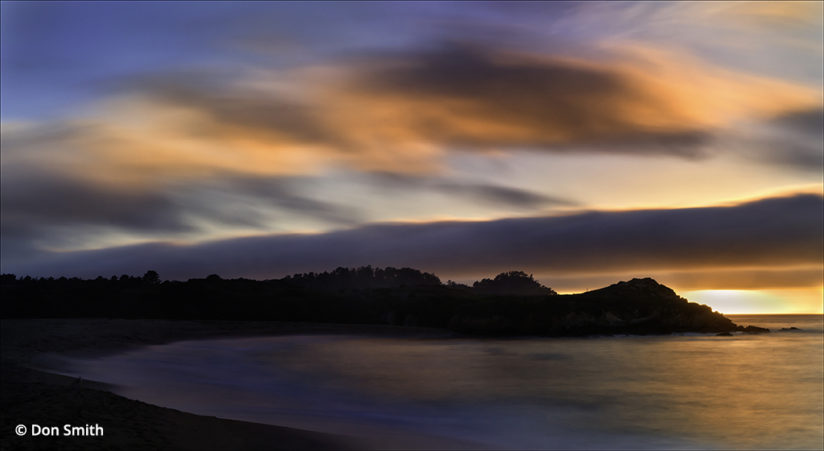
A mile down the road resides the iconic Point Lobos State Natural Reserve. In the winter and spring months, it is easy to have the sun in your frame as it is setting off the northern tip of the reserve. The area is a photographer’s playground. I can spend countless hours at any time of the year in this marvelous location exploring its dramatic coves, cliffs, cypress trees, tidal pools, wildlife and hidden surprises. Deriving its name from the offshore rocks at Punta de Los Lobos Marinos (Point of the Sea Wolves),where the sound of the sea lions carries inland, the reserve has often been dubbed “the crown jewel of the California state park system.”Within its boundaries, one can discover rare plant communities, endangered archeological sites, unique geological formations and incredibly rich flora and fauna of both land and sea.
For simplicity sake, I like to divide the reserve into four geographical locations: north, south, east and central west. It’s hard to pick a favorite, but if I had only a couple hours, I would probably start in the southern end. There one has the option of photographing sun-basking harbor seals and the iconic China Cove and Gibson Beach, as well as Bird Island, where an abundance of pelicans and cormorants reside.
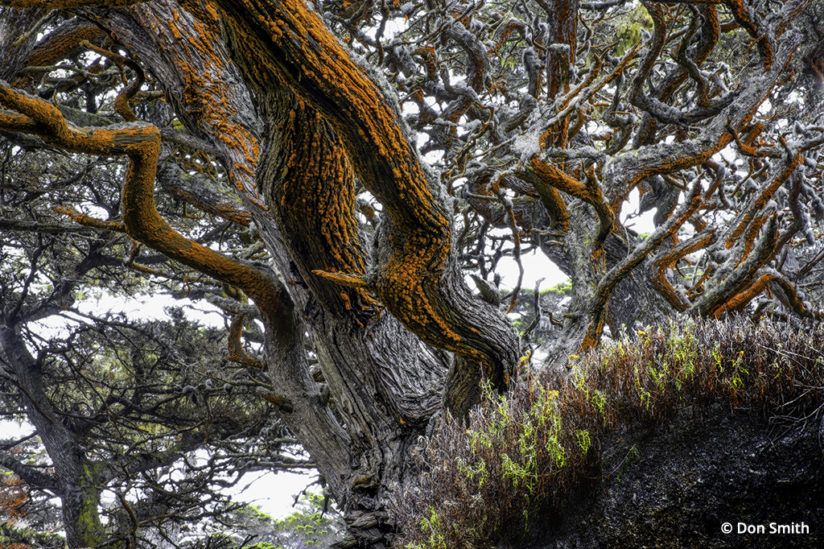
To the north, one will discover the main grove of famed Monterey cypress trees. The Cypress Grove trail loops along South Point, Pinnacle Cove (a great sunset location) and Cypress Cove (a beautiful late-afternoon location). I can spend hours in this end of the reserve, especially on a foggy summer day when the damp mist adds a sense of drama to the craggily shaped cypress trees found inland in the Allan Memorial Grove. On the far northern tip, one will encounter odd orange-algae covered cypress trees that make for surreal images.
The Cypress Grove loop will eventually connect with the East Grove Trail. Shortly after connecting, look for the Old Veteran’s Trail and the Old Veteran Cypress, the oldest of all cypress trees in the grove. It is best photographed under soft overcast or fog. The roots of this tree make for an interesting image, and don’t rule out a moody black-and-white capture.
Garrapata Beach
Though one could spend endless hours in Point Lobos, there is so much more to explore. After passing Carmel Highlands and winding south through a grove of picturesque Monterey cypress trees, Highway 1 begins a straight stretch, and the jaw-dropping coastline becomes visible seemingly at once. You have begun your journey into one of the most-photographed areas in all of Big Sur: Garrapata State Park (Spanish for “tick”). This jagged stretch of coast can be photographed with success during all times of the day.
Much of this stretch of coastline is accessible via a labyrinth of trails that wind through the coastal scrub. Watch out for poison oak, easily identified by its serrated-edged leaves. I encourage you to wear long pants and to dutifully scrub the legs of your tripod with soap and water after an excursion to this area, as the oil from the plant (even when dormant during winter months) can cling to the tripod legs. Also, be careful where you place your backpack. But don’t let this discourage you. I routinely shoot in this area, along with workshop participants, and have never had a bad experience. Like all areas of this coastline, exercise extreme caution as you wind through the various trails, especially at high tide. There are a plethora of sea stacks and protruding rocks to allow for even the most docile of surf to display its fury.
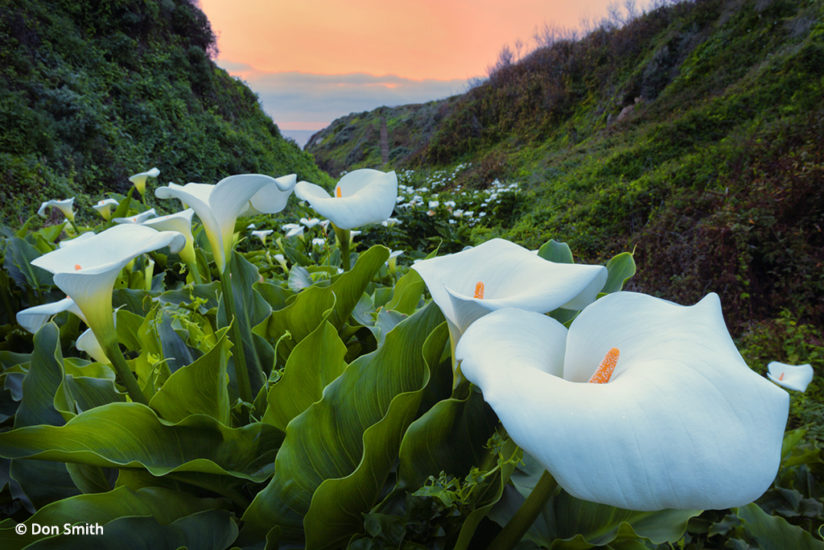
Traveling south, one will come upon the large pullout for Garrapata Beach. This is also where the iconic calla lily grove resides. Although very photogenic, this relatively small grove is not what it once was. Unfortunately, state park crews found it wise to cut a trail through this grove, thus making it easily accessible to a multitude of visitors. I have had my best success during the week when few people are around—at all costs avoid weekends. Moreover, many people (and some photographers) are not careful and tend to trample many of the fresh lilies. I won’t get on an environmental rant here, but if you do visit this lovely grove, please treat it with respect so others can enjoy and photograph its beauty. The lilies can be found between the months of January through May.
Personally, I find Garrapata Beach perhaps the most scenic beach for photography on the entire Big Sur coast. Depending on tide conditions, the beach offers a variety of scenes that seemingly change from day-to-day. Perhaps my most favorite time is at low tide, as otherworldly triangular-shaped black rocks appear. As with most of Big Sur, Garrapata is best photographed in late afternoon and sunset. On clear-sky days, dusk becomes my favorite time to photograph as the horizon will turn a warm orange and the water a cobalt blue. I’ve seen this lighting scenario last for up to one hour.
Bixby Bridge
A couple miles south of Garrapata Beach resides the most iconic and certainly the most photographed of all the major bridges in Big Sur, the famed Bixby Bridge. Prior to the bridge’s completion in 1932, travelers had to detour up unpaved Old Coast Road through Bixby Canyon to cross Bixby Creek. The completion of the concrete-reinforced, spandrel-arched bridge connected the final stretch of Highway 1 between the bridge and Andrew Molera State Park, providing travelers access to the village of Big Sur. At 714 feet long and 260 feet high, the bridge has become a symbol of the Big Sur coast and has frequently appeared in film and on television.
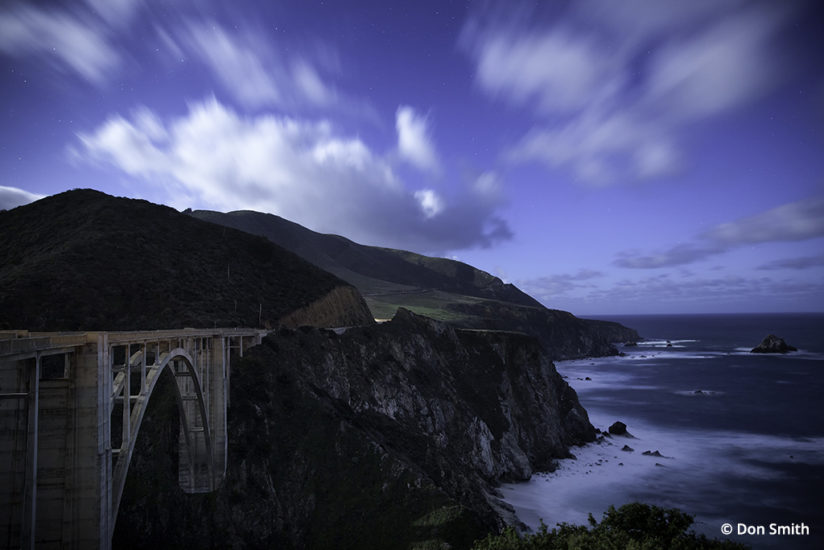
On any given day, tourists can be seen with point-and-shoots creating self-portraits with the bridge serving as a backdrop. For serious photography, late afternoon and sunset work best, as the bridge is bathed in warm light, adding life to the drab grey concrete. Within the past couple of years, I have used the bridge as an anchor for some amazing night images.
I would again advise patience if you plan to capture this bridge on either weekends or summer tourist months. Winter weekdays often provide the best light as the spring/summer fog has yet to make an appearance. It is also fun to do night photography in the parking area next to the bridge. I rate Bixby Bridge another “must see” location.
Hurricane Point & Point Sur
As we continue our travels south again along Highway 1, stopping at a large turnout on the west side of the highway just before the highway makes a somewhat blind left turn, is Hurricane Point, perhaps one of the most photographed views of the coast. On a summer afternoon, just getting out of the car can be a challenge as the updrafts create strong, continuous gales that can make standing still a frustrating exercise.
I have had luck photographing this location at both ends of the day, especially in the morning hours if mist is hugging the headlands, but I mostly prefer the late afternoon and sunset hours. A shot here capturing a clearing storm would be the ideal if one is lucky enough to get all the elements cooperating. Winter and spring months are typically rewarding as the hillsides turn a lush green. Wide views tend to work best, but I have made some interesting shots—especially at dusk—using telephotos to isolate sections of the scene. Horizontal and vertical framing both work well. The weather can change from hour to hour, so if you have time and you are not pleased with the light, come back.
Hurricane Point is another location I would recommend as “don’t miss.” Even if weather conditions are not optimal, simply standing on this point will engage one’s soul with the surrounding beauty that Mother Nature offers. Just be careful pulling back onto the highway, as cars tend to race around the tight bend in the road.

As Highway 1 begins its winding descent south of Hurricane Point, one is presented with a sweeping view down the coastline with Point Sur and the Point Sur Lighthouse in the distance. This is truly one of the best sunrise location areas along the entire coast, as warm predawn and sunrise light tend to bathe the sky (and clouds, if present) with dawn’s pink and orange hues. There are a multitude of turnouts on the west side as one proceeds down the highway, and they all provide a marvelous view.
Another favorite and often-photographed icon of Big Sur is the Point Sur Light Station. Sitting 361 feet above the Pacific atop a massive volcanic rock, the lighthouse is fully functional, and its rotating aero beacon can reach 24 miles out to sea, helping to guide ships through this rocky portion of the coast. The light station served as a home for four lighthouse keepers and their families from 1889 to 1974. It is now fully automated and is run by the California State Park system.
I have never shot from the lighthouse itself, as turnouts abound along the western side of Highway 1. I have used every lens in my bag on this location. A favorite game I have my workshop students play is to try to time the lighthouse light as it circles around (it’s not that difficult). With your lens stopped down to an aperture of ƒ/16 or smaller, generally a star burst will result. A 300mm to 400mm lens can isolate just a section of the rock and lighthouse, and the star burst can be quite dramatic. Try this against a sunset or dusk sky on a clear night. Night photography also works well here on a clear night.
Pfeiffer Beach
Continuing south 9 miles, one will find the turnoff of Sycamore Canyon Road. Two miles down the narrow, winding road lies Pfeiffer Beach and the famed Keyhole Arch. Like Yosemite’s Horsetail Falls, this arch is becoming more and more of a quest for photographers. Rarely have I been to this location without seeing at least a handful of other photographers. The reason most come is in hopes of capturing the mystical shaft of orange light that pours through the arch, which can only be seen around winter solstice, when the sun has tracked to its southern-most location, placing it in a direct line with the arch.
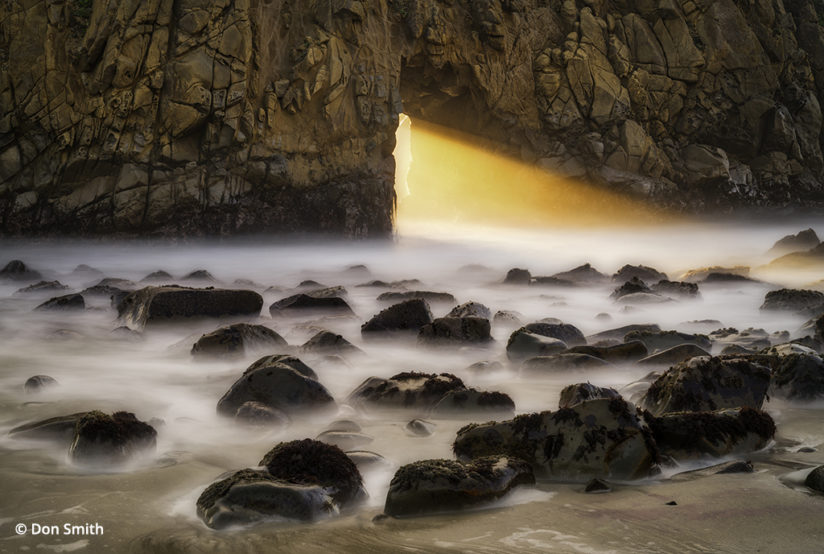
I have seen the shaft appear as early as mid-November and as late as late January. The difficulty comes in getting the proper conditions in which to see the shaft. The optimum time is near sunset with a clear horizon. Some mist needs to be present inside the arch so the light can be diffracted. I have made many satisfying images at regular to high tide, as the wave action crashing through the arch (much like a funnel) will provide ample mist.
There are two arches at Pfeiffer, and both are worth exploring. Compositions can be made with a range of lenses, depending on how close the tide allows one to get to the arches. There is also a nice composition of the arch if one is willing to climb the rather steep sandstone dune across from the arch.
The final, and perhaps my most favorite, destination in all Big Sur is Julia Pfeiffer Burns State Park and the beautiful McWay Falls. Although the main fall is located on the western side of Highway 1, the parking area is on the east side of the highway.
This is a state park, and a self-pay fee is required. I urge you not to ignore this as rangers do check for tags, and the fines can start in the $70 range. There is a smaller fall to the east of the parking lot at the beginning of the Ewoldsen Trail. This trail follows McWay Creek and winds through a dense redwood forest. If you have the time, I strongly suggest that you explore this area.
Having said that, the true star of the show appears by following the Waterfall Trail toward the highway and through the metal pipe tunnel leading to the Overlook Trail. As you emerge, the trail will bend to the right, allowing the amazing view of McWay Cove and finally McWay Falls, which tumbles some 80 feet into a turquoise-colored cove and white sand beach, which is bordered by Saddle Rock. The trail meanders along for about 200 yards and ends at the concrete garden terrace of the former McWay Waterfall House, which was turned over to the state in 1962 and demolished. From this point, one has views north along the dramatic and steep headlands, which makes for another beautiful picture opportunity.
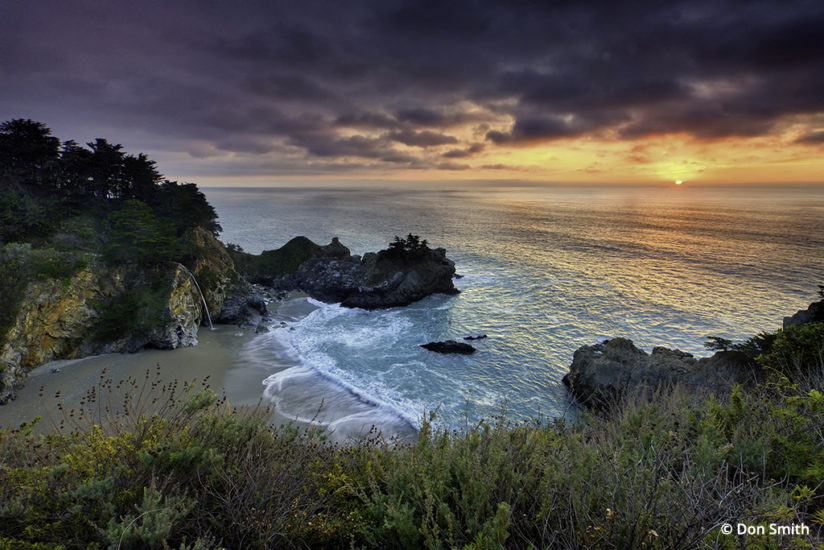
There is no one or “right” way to photograph McWay Falls. I have used lenses ranging from 16mm to 300mm for both horizontal and vertical compositions. The fall runs year-round but is most active after heavy spring storms. Generally, the best light is near sunset and can look good virtually any month of the year. However, if clouds are not present, I prefer March through October, as the sun’s position allows for its warm rays near sunset to bathe its sweet light over the entire cove. This is a “don’t miss” area no matter the season. Time your shoot for late-afternoon through sunset and hope for some clouds!
Big Sur is a wondrous area, and one I never grow tired of exploring. Take your time, respect the power of the ocean, and enjoy one of the world’s most dramatic and soulful areas.
See more of Don Smith’s work at donsmithphotography.com.
YOU MIGHT ALSO LIKE
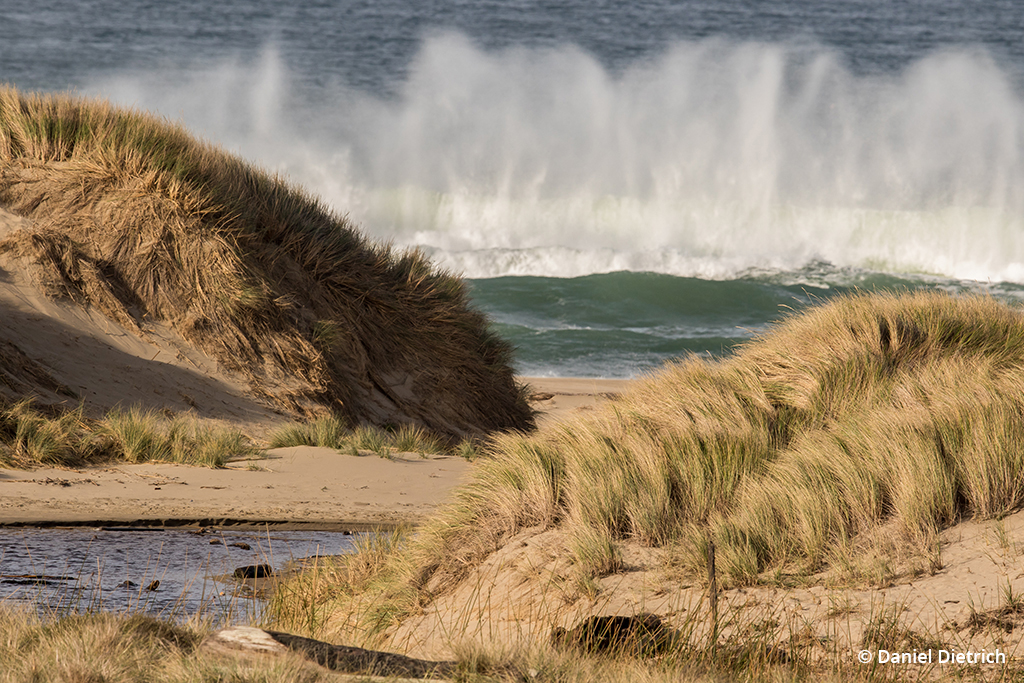
Point Reyes National Seashore
One of the best-kept secrets of the National Park Service, Point Reyes National Seashore is a year-round wildlife destination. Read now.
The post Winding, Wondrous Big Sur appeared first on Outdoor Photographer.

